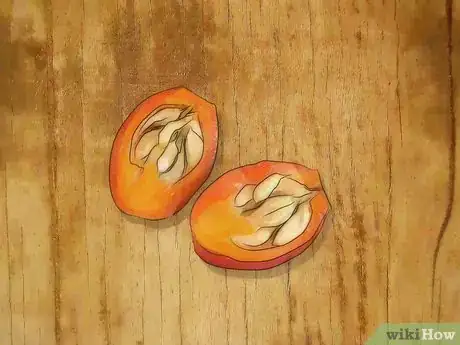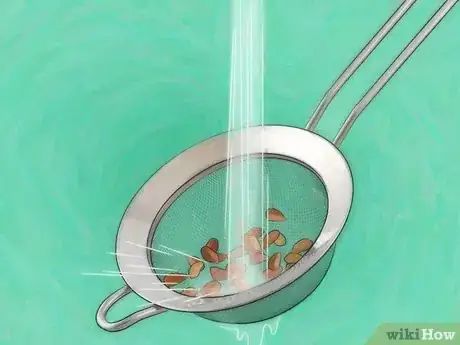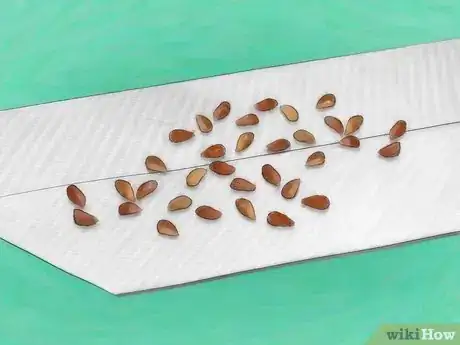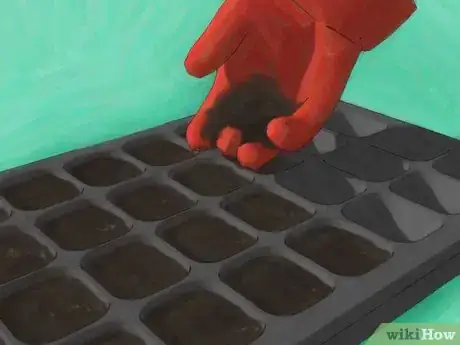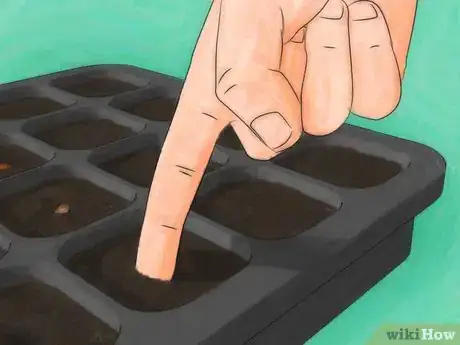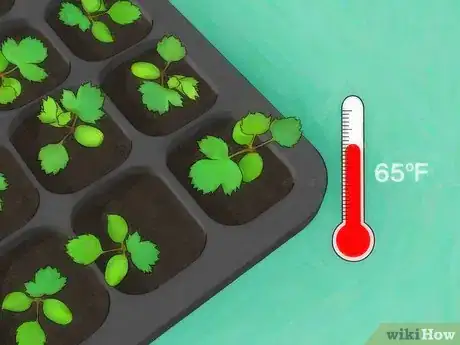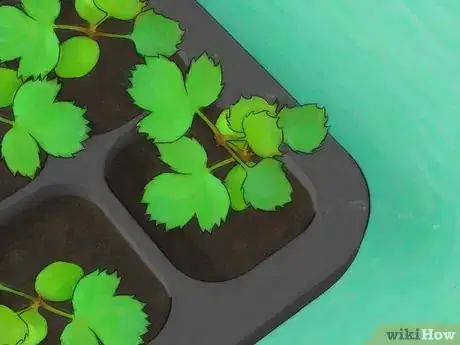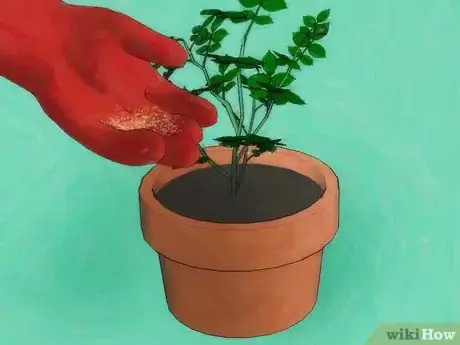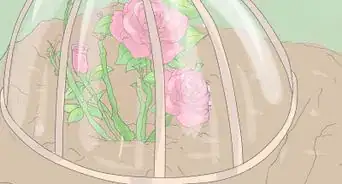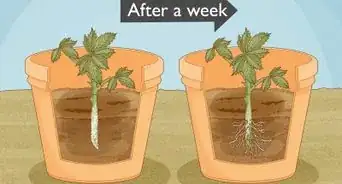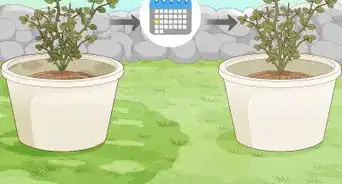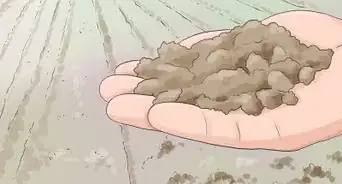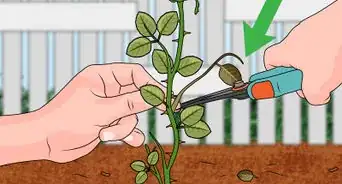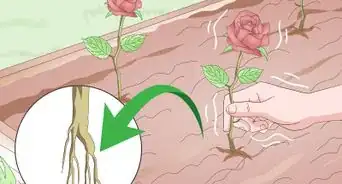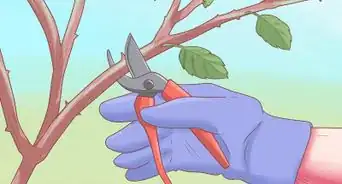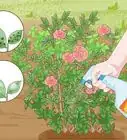This article was co-authored by Andrew Carberry, MPH. Andrew Carberry is a Food Systems Expert and the Senior Program Associate at the Wallace Centere at Winrock International in Little Rock, Arkansas. He has worked in food systems since 2008 and has experience working on farm-to-school projects, food safety programs, and working with local and state coalitions in Arkansas. He is a graduate of the College of William and Mary and holds a Masters degree in public health and nutrition from the University of Tennessee.
wikiHow marks an article as reader-approved once it receives enough positive feedback. This article received 48 testimonials and 89% of readers who voted found it helpful, earning it our reader-approved status.
This article has been viewed 1,081,025 times.
Growing roses from seed can be challenging since the majority of seeds you collect often won't germinate regardless of your efforts. Fortunately, most rose plants produce a large number of seeds inside their rose hips, so it usually isn't necessary to achieve a high success rate. Keep in mind that the plants that grow may be different in appearance or other characteristics from the mother plant, especially if that plant is a hybrid of two varieties grafted together.
Steps
Harvesting Seeds
-
1Allow rose hips to develop by leaving dead flowers on the plant. The flowers are typically pollinated by insects, or pollinate themselves in some varieties, so there is no need to pollinate by hand unless you are breeding specific plants together. Leave the flowers on the rose plant without cutting them. After they wither, small fruits known as rose hips will develop in their place.
- Note: The seeds you harvest may grow into a plant with different characteristics. This can occur if you are harvesting from a hybrid rose variety, or if the rose is pollinated with pollen from a different, nearby rose variety.
-
2Remove the rose hips once ripe. The rose hips will start out small and green, then change color as they grow until they are completely red, orange, brown, or purple. You may pick them at this point, or wait until they are just beginning to dry out and wrinkle. Don't wait until they are fully dry and brown, as the seeds inside may have died by this point.Advertisement
-
3Cut the hips open and remove the seeds. Cut open the rose hips with a knife, revealing the seeds inside. Pull these out with the knife tip or any other utensil.
- The number of seeds in each rose hip varies greatly between rose varieties. There may only be a few per rose hip, or several dozen.
-
4Wipe the pulp off the seeds. If the pulp is left on the seeds, it may prevent them from germinating. One quick way to remove the pulp is to place the seeds in a sieve or mesh, running water through it as you rub the seeds against the sides.
Germinating Seeds
-
1Soak the seeds in diluted hydrogen peroxide (optional). A mixture of water and hydrogen peroxide may reduce the growth of mold on the seeds. Stir 1.5 teaspoons (7 mL) of 3% hydrogen peroxide into 1 cup (240 mL) water.[1] Keep the rose seeds in this solution for at least one hour.
- Some studies suggest that a little mold growth can actually help break down the casing surrounding the seed, but this treatment is still recommended to prevent mold growth in larger amounts.
- A light dusting of anti-fungal powder for plants is an alternative to this step.
-
2Place the seeds in a damp material. Rose seeds typically won't sprout unless they are kept in cold, wet conditions, mimicking a winter environment. Place the seeds between two layers of lightly dampened paper towels, or in a container of dampened salt-free river sand, peat moss, or vermiculite.
- This is the first step in a process called stratification. If you are using store-bought seeds and the label says they are already stratified, skip to the planting seeds section below.[2]
-
3Leave the seeds in the fridge for several weeks. Put the seeds and moist material in a plastic bag or seedling tray in a plastic bag or seedling trays, and keep them in a cold area of a refrigerator, such as an otherwise empty crisper drawer.
- Do not keep them in the same area of the refrigerator as fruit or vegetables, which can release chemicals that prevent the seeds from developing.
- Keep the seed medium slightly damp. Add a few drops of water to each paper towel whenever they begin to dry out.
-
4Remove the seeds from the fridge. Try to do this around the time that the seeds would normally start to germinate, such as in early spring. Make sure that the environment outside of the fridge is about 70 degrees Fahrenheit.[3] The seed will not sprout until you take them out of the fridge. Depending on the rose variety and individual seeds, the seeds could take anywhere from four to sixteen weeks to germinate. Often, 70% or more of the seeds never sprout at all.[4]
Planting Seeds
-
1Fill a container with sterile seed starting mix. Small seedling starting trays make it easy to care for many seeds at once. Alternatively, use plastic drinking cups with a hole punched in the bottom, to make root growth easier to view.
- Regular soil is not recommended, as it may not drain well enough and cause the seedlings to rot.
-
2Plant the seeds. Some store-bought seeds can be planted immediately. If you germinated your own seeds as described above, plant them as soon as they begin to sprout. Plant with the sprout pointed downward, as this is the root. Lightly cover them with soil, about 1/4 inch (6 mm) deep. Space seeds at least 2 inches (5 cm) apart to minimize competition.[5]
- Sprouted seeds should emerge as seedlings within a week. Store-bought seeds that do not require home stratification may take several weeks.[6] Seeds that have not been stratified, using the germination process above, may take two or three years to emerge.
-
3Keep the seedlings in warm, moist soil. Keep the soil damp, but not soggy. A temperature between 60 and 70ºF (16–21ºC) is ideal for most rose varieties.[7] The seedlings typically thrive on six hours of sun or more each day, but you may wish to research the parent rose's variety to get a better idea of what your roses prefer.
-
4Learn when it's safe to transplant seedlings. The first two leaves visible are usually "cotyledons," or seed leaves. Once the seedling grows several "true leaves," with a more typical rose leaf appearance, it is more likely to survive transplanting. It is also easier on plants if they are transplanted to a larger pot for a year or two, and then transplanted outside.[8]
- It may be a good idea to transplant the seedlings soon if you notice the plant is root-bound, with its roots encircling the container.
- Do not transplant it outside until after the last frost.
-
5Care for your roses. Once the transplanted seedling is looking healthy again, you can start watering it as normal. Fertilizing a few times during the warm growing season may help your plant grow and bloom if you follow the fertilizer instructions, but keep in mind that some varieties of rose will not bloom at all during their first year of life.
Expert Q&A
-
QuestionCan I harvest rose hips in the northeastern U.S. and store it until spring? When is the best time to start germination in a northeastern area?
 Andrew Carberry, MPHAndrew Carberry is a Food Systems Expert and the Senior Program Associate at the Wallace Centere at Winrock International in Little Rock, Arkansas. He has worked in food systems since 2008 and has experience working on farm-to-school projects, food safety programs, and working with local and state coalitions in Arkansas. He is a graduate of the College of William and Mary and holds a Masters degree in public health and nutrition from the University of Tennessee.
Andrew Carberry, MPHAndrew Carberry is a Food Systems Expert and the Senior Program Associate at the Wallace Centere at Winrock International in Little Rock, Arkansas. He has worked in food systems since 2008 and has experience working on farm-to-school projects, food safety programs, and working with local and state coalitions in Arkansas. He is a graduate of the College of William and Mary and holds a Masters degree in public health and nutrition from the University of Tennessee.
Food Systems Expert It is best to start germination during the winter months. If you want to transplant out in the spring, start the stratification process at least 120 days before your last frost date in the spring.
It is best to start germination during the winter months. If you want to transplant out in the spring, start the stratification process at least 120 days before your last frost date in the spring. -
QuestionSince Bayer products kill bees, is there an alternative pesticide you would suggest?
 Community AnswerI've been growing roses organically for 15 years. They get black spots, but it doesn't kill them: I just remove the affected leaves by hand when I see them. You can spray afids off the roses with a jet of water, or flick them off with a finger nail, but mine get eaten by visiting birds who do the job for me!
Community AnswerI've been growing roses organically for 15 years. They get black spots, but it doesn't kill them: I just remove the affected leaves by hand when I see them. You can spray afids off the roses with a jet of water, or flick them off with a finger nail, but mine get eaten by visiting birds who do the job for me! -
QuestionWhen is the best time to plant rainbow rose seeds?
 Community AnswerSummer is the best time to plant rainbow rose seeds. If you need to plant them out of season, try keeping them somewhere in direct light.
Community AnswerSummer is the best time to plant rainbow rose seeds. If you need to plant them out of season, try keeping them somewhere in direct light.
Things You'll Need
- Water
- Paper towels (or see instructions for alternatives)
- Rose hips or rose seeds
- 3% hydrogen peroxide (optional)
- Seed starting mix
Warnings
- Be skeptical if advised to float the seeds in water to test whether they can be planted. While this may work for some other plants, rose seeds often float whether or not they are defective.⧼thumbs_response⧽
References
- ↑ http://www.using-hydrogen-peroxide.com/gardening-with-hydrogen-peroxide.html
- ↑ https://www.reneesgarden.com/blogs/gardening-resources/86678657-lavender-and-roses-from-seed
- ↑ https://www.gardeningknowhow.com/ornamental/flowers/roses/growing-roses-from-seed.htm
- ↑ http://www.gardeningknowhow.com/ornamental/flowers/roses/growing-roses-from-seed.htm
- ↑ https://www.reneesgarden.com/blogs/gardening-resources/86678657-lavender-and-roses-from-seed
- ↑ https://www.reneesgarden.com/blogs/gardening-resources/86678657-lavender-and-roses-from-seed
- ↑ https://www.reneesgarden.com/blogs/gardening-resources/86678657-lavender-and-roses-from-seed
- ↑ http://scvrs.homestead.com/hybridizekb1.html
About This Article
To grow roses from seed, start by soaking the seeds in diluted hydrogen peroxide to kill any mold. Then, place the seeds between two layers of damp paper towel and leave them in the fridge. After the seeds have been in the fridge for several weeks, remove them from the refrigerator and plant the seeds 1/4 inch deep in small pots filled with sterile seed starting mix. Keep the seedlings warm and the soil moist until they form “true leaves” with the typical rose leaf appearance and are ready to be transplanted. For tips from our Gardening reviewer on how to harvest seeds from an existing rose bush, read on!


